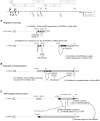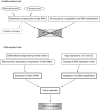Productive Lifecycle of Human Papillomaviruses that Depends Upon Squamous Epithelial Differentiation
- PMID: 22536200
- PMCID: PMC3334820
- DOI: 10.3389/fmicb.2012.00152
Productive Lifecycle of Human Papillomaviruses that Depends Upon Squamous Epithelial Differentiation
Abstract
Human papillomaviruses (HPVs) target the stratified epidermis, and can causes diseases ranging from benign condylomas to malignant tumors. Infections of HPVs in the genital tract are among the most common sexually transmitted diseases, and a major risk factor for cervical cancer. The virus targets epithelial cells in the basal layer of the epithelium, while progeny virions egress from terminally differentiated cells in the cornified layer, the surface layer of the epithelium. In infected basal cells, the virus maintains its genomic DNA at low-copy numbers, at which the viral productive lifecycle cannot proceed. Progression of the productive lifecycle requires differentiation of the host cell, indicating that there is tight crosstalk between viral replication and host differentiation programs. In this review, we discuss the regulation of the HPV lifecycle controlled by the differentiation program of the host cells.
Keywords: HPV; differentiation; epithelial cell; keratinocyte.
Figures






References
LinkOut - more resources
Full Text Sources

